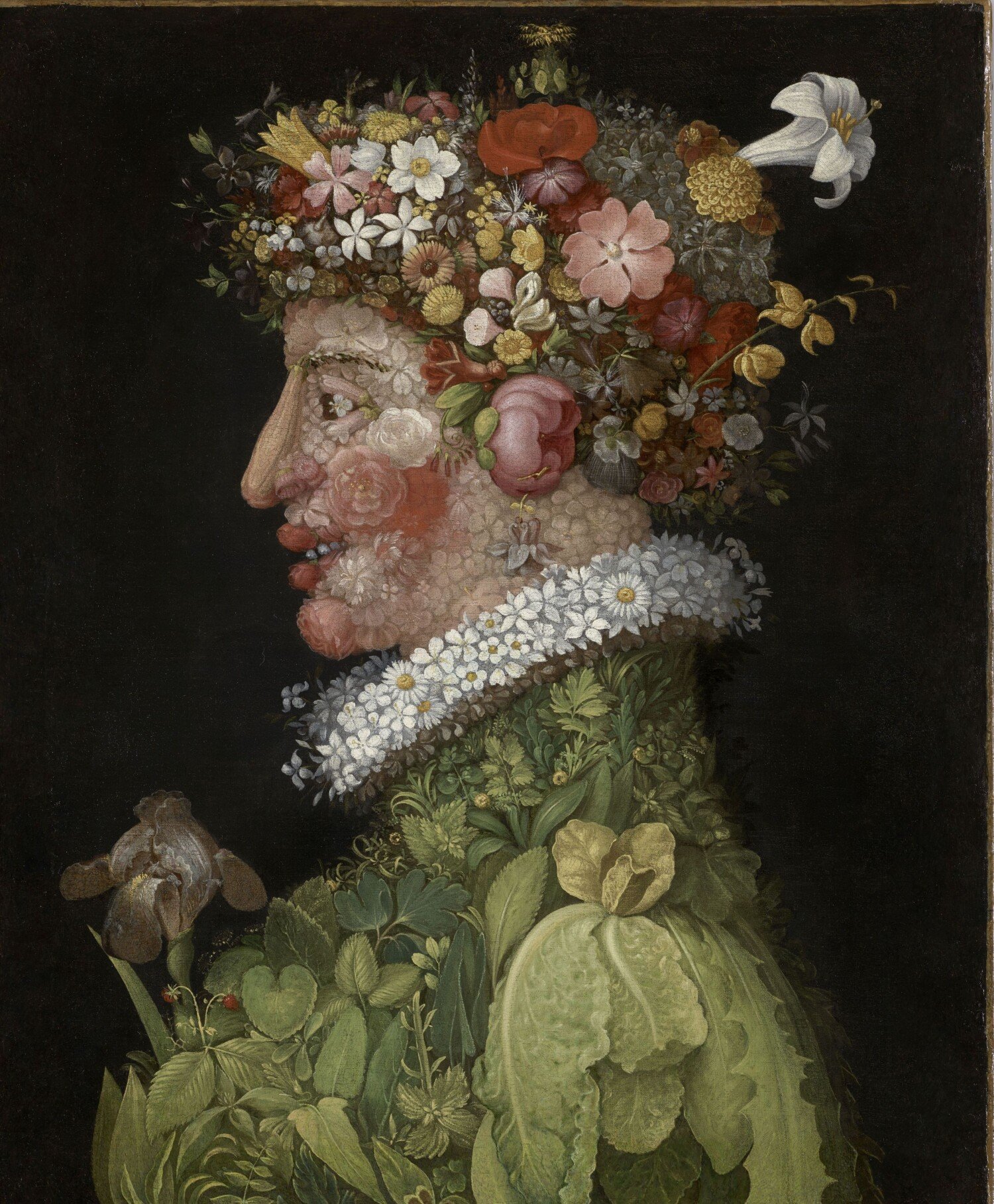
After an eight-month absence, Giuseppe Arcimboldo’s suite of paintings “The Four Seasons” (1573) has reclaimed its spot in the Louvre Museum. The portraits now hanging in the Denon Wing, however, are noticeably different—glowing, even—following a thorough restoration that has improved their definition and chromatic range.
“The Four Seasons” encompasses four paintings representing Winter, Spring, Summer, and Autumn, each depicting a profile made up of fruit, flowers, and plants individual to the season. Spring, for instance, is blossoming with lush leaves, daisies, and berries, while Winter is wrinkled with the knobby bark of a tree trunk.
Giuseppe Arcimboldo, Winter (1573) from “The Four Seasons,” after restoration. Photo: © GrandPalaisRmn (musée du Louvre) / Adrien Didierjean.
A favored court painter later better known for these intricately composite portraits, Arcimboldo created “Seasons” for the Holy Roman Emperor Maximilian II, the paintings recalling the presentation of faces on Imperial Roman coins. The emperor’s original Winter and Summer have survived and are held by the Kunsthistorisches Museum in Vienna; the set in the Louvre’s collection is a copy that Maximilian ordered the painter to create for Augustus of Saxony as a diplomatic gift.
Over the decades they have hung in the Louvre, the “Seasons” canvases have taken on a yellowed appearance, with their increasingly cloudy varnishes obscuring the paintings. The restorers set out to lighten the varnish, but encountered another issue: what to do with the floral garlands that ran along the edges of each portrait?
Giuseppe Arcimboldo, Spring (1573) from “The Four Seasons,” before restoration. Photo: © 2013 GrandPalaisRmn (musée du Louvre) / Michel Urtado.
These flourishes are believed to be later additions—Arcimboldo’s portraits were typically painted on solid black backgrounds, and only the Louvre’s “Seasons” cycle boasts these borders. They were likely made by the artist, then by others when the canvases were cut and re-enlarged in the 18th and 20th centuries.
Scientific imaging and analysis during restoration confirmed that these additions indeed date to the 18th and 19th centuries. But more egregiously, they also covered significant portions of the original paintings. The floral borders hid about four centimeters of all the edges of the paintings, sometimes concealing key marks such as the coat of arms of Augustus of Saxony on Winter. What’s more, the adjustments to the paintings’ size and format had upset the alignment of the portraits, notably the gaze of the subjects.
Giuseppe Arcimboldo, Summer (1573) from “The Four Seasons,” after restoration. Photo: © GrandPalaisRmn (musée du Louvre) / Adrien Didierjean.
The restorers opted to remove these floral festoons from the portraits. In doing so, they found a well-preserved layer and even some additional flowers on the head of Spring. Augustus’s coat of arms was also revealed. For the canvases which had their sides cut, the team restored these missing portions based on copies made around the 17th century.
Giuseppe Arcimboldo, Autumn (1573) from “The Four Seasons,” after restoration. Photo: © GrandPalaisRmn (musée du Louvre) / Adrien Didierjean.
The newly restored portraits return to the Louvre with better legibility and a refreshed dimensionality. “We can now appreciate the subtlety of the artist’s pictorial technique which modulates color as well as shadow and light to precisely describe the plants and give them relief,” the museum said in a media release. “It thus creates the illusion of movement and expression.”